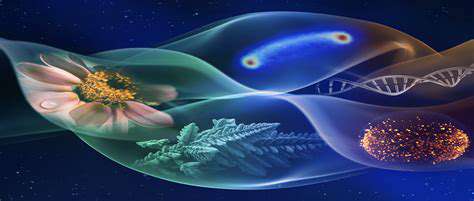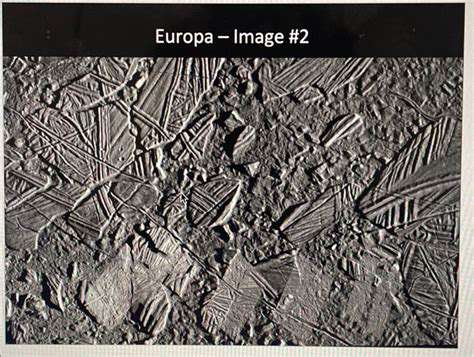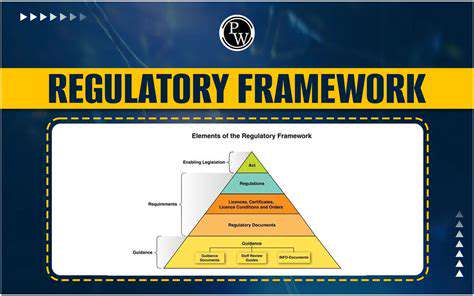Ancient Riverbeds and Channels
Evidence of ancient riverbeds and channels on Mars, often appearing as intricate networks of valleys and canyons, strongly suggests the presence of liquid water in the Martian past. These features, observed by various spacecraft, including the Curiosity rover, point to flowing water that carved these channels over vast stretches of time. The channels' complexity, including meandering patterns and the presence of alluvial fans, further supports the theory that liquid water once flowed on the Martian surface, potentially in significant quantities. Understanding these features is crucial to reconstructing the Martian climate and its potential habitability.
The discovery of these riverbeds and channels is a key piece of the puzzle in exploring Mars's past environments. Their presence implies a dynamic hydrological system that may have persisted for extended periods. Further research into the composition of the sediments and rocks within these channels will provide crucial insights into the nature of the water and the environmental conditions that prevailed during these periods of liquid water.
Lakebeds and Sedimentary Deposits
The presence of ancient lakebeds and sedimentary deposits on Mars, revealed through the analysis of images and data collected by orbiters and rovers, adds another layer of evidence for the existence of liquid water. These deposits, often exhibiting layered structures indicative of lake environments, provide clues about the duration and stability of these water bodies. The presence of minerals like clays, which often form in the presence of water, further reinforces the idea that liquid water played a significant role in shaping the Martian surface.
Identifying these lakebeds and the types of sediments they contain is essential for understanding the environmental conditions that existed in these ancient lakes. The presence of different types of minerals and sedimentary structures within these deposits can reveal information about the water's chemistry, the input of materials from surrounding areas, and the overall duration of the lake's existence. These findings have significant implications for the potential habitability of Mars in the past.
Evidence from Curiosity Rover
The Curiosity rover, with its sophisticated suite of instruments, has directly examined Martian rocks and sediments, providing crucial data about the presence and nature of liquid water. Its analyses of sedimentary layers and the presence of organic molecules potentially associated with past water activity have offered critical support to the hypothesis of a once-watery Mars. The rover's findings provide a detailed view of the local environment in the Gale Crater region, offering insights into the specific conditions that existed in this area billions of years ago.
Curiosity's investigations into the chemical composition of Martian rocks and soils have provided important information about the types of water that once flowed on Mars. The rover's ability to drill and analyze samples has allowed scientists to determine the presence of minerals that formed in the presence of water, further strengthening the case for a past watery Mars. These on-the-ground observations from Curiosity have revolutionized our understanding of the planet's history.
Implications for Past Habitability
The discovery of evidence for ancient riverbeds, lakebeds, and sedimentary deposits on Mars, along with the Curiosity rover's findings, significantly increases the likelihood that Mars may have once been habitable. The presence of liquid water, essential for life as we know it, opens up the possibility that microbial life may have existed on Mars in the past. Further research will focus on analyzing the chemical composition and the specific conditions of these environments to determine the potential for past habitability.
Understanding the environmental conditions that allowed for the presence of liquid water on Mars is crucial for evaluating the possibility of past life. The conditions necessary for life may have existed briefly or over extended periods. The study of ancient riverbeds, lakebeds, and the data gathered by the Curiosity rover provides crucial clues in this endeavor, shaping our understanding of the potential for life beyond Earth and the history of our solar system.
The Search for Organic Molecules: A Potential Sign of Past Life?
Unveiling the Martian Landscape
The Curiosity rover's journey across the Martian surface has unveiled a landscape of geological wonders, offering tantalizing glimpses into the planet's past. From the layered sedimentary rocks of Gale Crater to the intricate mineral formations, the rover has meticulously documented the history of water activity on Mars. These findings are crucial to understanding the potential habitability of the planet and the search for evidence of past life. The diverse rock structures and textures provide valuable context for interpreting the presence of organic molecules.
Analyzing the Martian terrain, Curiosity has identified regions rich in clays and sulfates, minerals often associated with past water environments. These water-rich environments might have provided the necessary conditions for the formation of organic molecules, essential building blocks of life as we know it. The intricate interplay of geological processes and water activity are key elements in the search for clues to a possible past microbial life on Mars.
The Importance of Organic Molecules
Organic molecules are compounds containing carbon, and often hydrogen, oxygen, and nitrogen. Their presence is a significant indicator in the search for past life, as they are fundamental components of biological molecules like proteins and DNA. Discovering these molecules on Mars would be a major breakthrough, suggesting a past environment capable of supporting life. Finding evidence of complex organic molecules, beyond simple hydrocarbons, would be even more compelling. Their presence would indicate a more advanced chemical complexity, potentially associated with biological processes.
The detection of organic molecules, however, doesn't automatically equate to proof of past life. These molecules could have formed through non-biological processes. Therefore, scientists carefully analyze the context and source of these molecules. The concentration, diversity, and preservation of these molecules are critical factors in determining their potential biological origin. Understanding the chemical pathways that led to their formation is paramount.
Challenges and Future Investigations
Analyzing samples for the presence of organic molecules presents numerous challenges. The Martian environment is harsh, and the molecules themselves can be easily degraded or altered. The rover's instruments, while sophisticated, require careful calibration and analysis to accurately identify organic molecules amidst the complex Martian geology. The rover's ability to collect and analyze samples is essential for identifying organic molecules in a scientifically robust manner. Further investigations, including the potential for sample return missions, are crucial to confirming the presence and origin of these molecules.
Future missions and improved analytical techniques are vital for overcoming these challenges. Further research on the potential for abiotic formation of organic molecules in similar Martian environments is needed. The goal is to isolate and characterize organic molecules in a way that definitively distinguishes between biological and non-biological origins. Continued exploration and meticulous analysis are essential to unravel the secrets held within the Martian landscape and potentially answer the profound question of whether life ever existed beyond Earth.
The Implications for Future Exploration: Paving the Way for Missions to Come

Exploring the Uncharted Territories of Space
The vast expanse of space, a realm filled with countless mysteries and untold wonders, beckons us to explore its uncharted territories. The potential discoveries that await us in the cosmos are truly immeasurable, promising to revolutionize our understanding of the universe and our place within it. From the origins of the universe to the possibility of extraterrestrial life, every expedition into the unknown holds the potential to reshape our scientific knowledge and inspire future generations.
The quest to explore these uncharted territories necessitates significant advancements in technology, pushing the boundaries of what is currently possible. From developing more efficient propulsion systems to creating robust and resilient spacecraft, the challenges are immense. This pursuit demands collaboration and ingenuity, uniting scientists, engineers, and visionaries in a shared objective. The future of space exploration hinges on our collective ability to overcome these obstacles and unlock the secrets held within the cosmos.
The Potential for New Discoveries
Imagine the thrill of discovering a new planet, orbiting a distant star, harboring life forms unlike anything we've ever encountered. Such a discovery would fundamentally alter our understanding of the universe and our place within it. The implications for our scientific knowledge are profound and could lead to breakthroughs in various fields, from medicine to materials science. Further exploration could reveal previously unknown elements, compounds, and phenomena, paving the way for technological advancements beyond our wildest imaginations.
The search for extraterrestrial life is a compelling driver for future space exploration. Discovering evidence of life beyond Earth would be one of the most monumental achievements in human history, profoundly impacting our philosophical and religious perspectives. This exploration also promises to unearth valuable resources, potentially solving resource scarcity issues on Earth and opening new economic opportunities for humanity.
The Ethical Considerations and Challenges
As we venture further into space, we must carefully consider the ethical implications of our actions. The potential for environmental damage to celestial bodies, the risk of contaminating other planets with terrestrial life, and the responsible use of space resources are crucial considerations that must be addressed. International collaboration and a shared vision for the future of space exploration are essential to navigate these challenges.
Moreover, the logistics of long-duration space missions present significant challenges. Ensuring the well-being of astronauts, providing sustainable life support systems, and managing the psychological effects of isolation and confinement are critical factors that need to be thoroughly examined. Addressing these challenges will be crucial for the success of future expeditions.
Beyond the Rover's Findings: The Larger Picture of Martian Habitability
Early Clues and the Search for Past Life
While the Curiosity rover's findings have been groundbreaking, they represent just one piece of a much larger puzzle. The rover's data, combined with previous missions and extensive research into Martian geology, suggests a complex history of water on Mars. Evidence of past lakes and rivers, along with organic molecules detected in Martian rocks, points toward a potential environment that could have supported microbial life billions of years ago. Understanding the conditions needed for life to emerge and thrive is crucial to interpreting the rover's discoveries within the context of broader Martian habitability.
The search for past life on Mars hinges on the presence of specific environmental conditions. Did Mars once possess the necessary ingredients for life, including liquid water, a stable atmosphere, and the essential chemical building blocks? The Curiosity rover's investigations into the geological formations and the chemical composition of Martian soil and rock are essential to answering this question. Understanding the interplay of these factors, and how they changed over time, is crucial to evaluating the possibility of past Martian life.
The Future of Exploration and the Search for Current Life
The Curiosity rover's success underscores the importance of continued exploration. Future missions, potentially including sample return missions, will be crucial in further examining the Martian environment and potentially searching for evidence of current or past microbial life. The prospect of finding extant life, even in the most extreme environments, would revolutionize our understanding of life's potential to adapt and thrive in the universe.
Beyond the search for past life, understanding the current Martian environment is critical. Are there hidden pockets of habitability, perhaps beneath the surface where conditions are more favorable for life to persist? Future missions will need to develop innovative strategies to explore these potential locations. The data collected by Curiosity and other missions will guide these investigations, shaping our understanding of the possibilities for life beyond Earth.
Further investigation into the potential for subsurface water or hydrothermal vents could reveal environments that might harbor life even today. The possibility of finding extant microorganisms, even microscopic ones, would be a monumental discovery, changing our understanding of the universe and our place within it. The Curiosity rover's findings are a critical step in this exciting journey of discovery.
The Martian environment, though seemingly hostile today, might hold clues to the potential for life in other seemingly inhospitable environments across the solar system and beyond. The Curiosity rover's discoveries, combined with continued exploration, will pave the way for a deeper understanding of the conditions necessary for life and its potential to exist in a wide array of environments.











